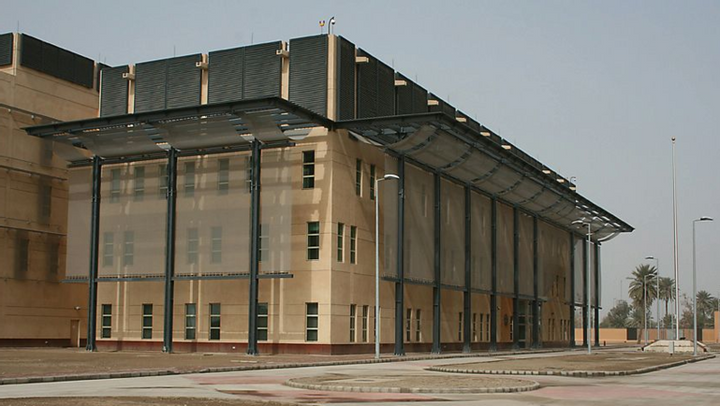Fall 2008
Fortified Diplomacy
– The Wilson Quarterly
The new U.S. embassy in Iraq is a fortress covering 104 acres, but building bunkers may not be the best model to follow.
Consider Belgium, a country the size of Maryland with 10 million people and some of the world’s best food. It is home to no fewer than three magnificent American embassies and missions housing ambassadors and staff that represent U.S. interests in Belgium, NATO, and the European Union. In an era dominated by the Internet, cell phones, videoconferencing, and modern airline connections, writes Jerrold D. Green, president of the Pacific Council on International Policy, “policymakers need to reassess whether retaining many traditional in-country functions of embassies still makes sense.”
Embassies such as the one to Belgium, a historic building on a busy underpass recently surrounded by a chainlink fence and a jumble of bollards and barricades, are “vulnerable, expensive, and cumbersome.” They wall diplomats in secluded safety zones rather than immersing them in local culture.
America will always need representatives stationed overseas to handle sensitive or specialized tasks and to understand the cultural, linguistic, political, and social factors that make each country different, Green says. The antiquated embassy-based model may not achieve that goal. Embassies are impediments to understanding local culture and costly to staff. Twenty-first-century overseas representation needs to be sharper and smarter—but diplomats need to get their mail delivered to the countries where they are stationed only when there is sufficient value added. Could routine visa applications be moved offshore? Could experts fly in for meetings with local officials? Britain is already experimenting with “laptop diplomats,” and other nations are asking foreign service staff to cover more than one country.
The new U.S. embassy in Iraq is roughly the size of Vatican City, with desk space for 1,000 workers behind blast-resistant walls. Baghdad, to be sure, is a special case. But the world is full of unique challenges to American diplomacy. To be effective, Green writes, embassies need to be integrators, not bunkers, as they are today.
* * *
THE SOURCE: “The Future of Diplomacy: Real Time or Real Estate?” by Jerrold D. Green, in RAND Review, Summer 2008.
Photo courtesy of The Department of State
